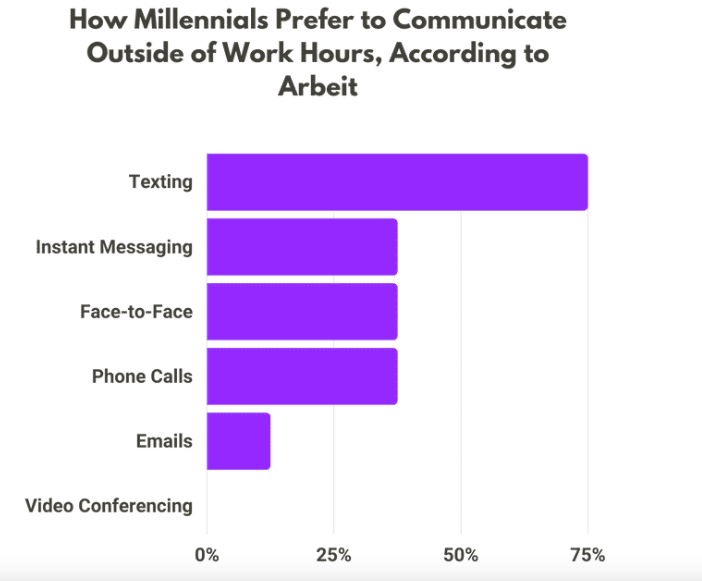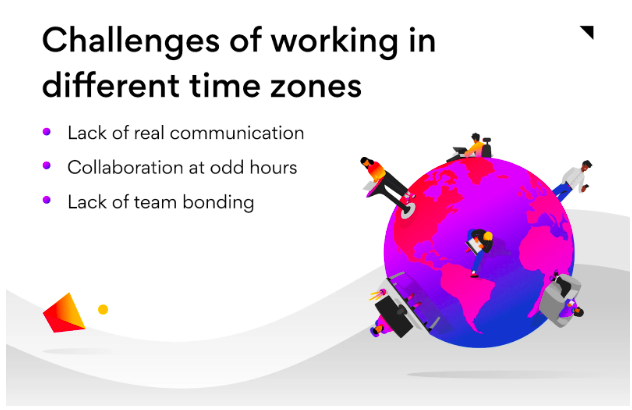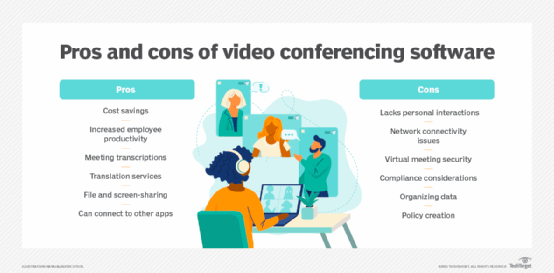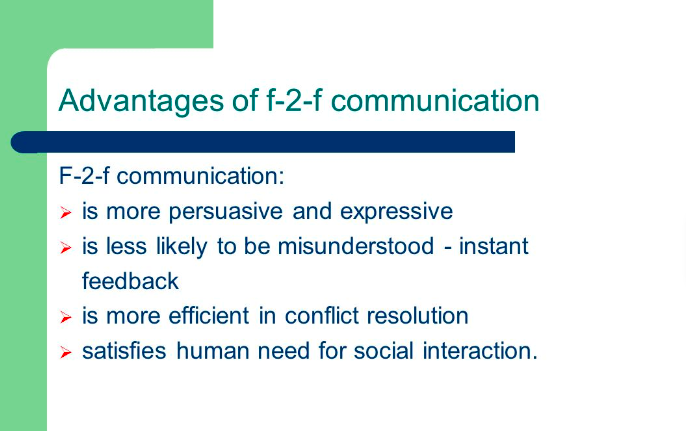While remote and hybrid work exploded in popularity during the Covid pandemic, we’re seeing that the trend of working from home part or all of the time isn’t going away. And while that might be appealing to a majority of employees worldwide, it comes with its fair share of challenges when trying to create a cohesive and effective workplace.
Chief among those challenges is communication. How can you effectively communicate with team members who are spread all over the world? In an ordinary office environment, it’s as easy as just walking down the hall, but now you’re separated by miles and oceans.
And while digital means of communication are useful in this regard, they’re far from perfect. Issues can arise because someone’s tone was misread via a text exchange, and employees might start to feel isolated from their managers and teammates.
Thankfully, there are ways to overcome these communication challenges, making the remote working formula work for you to create a cohesive and effective team. In this article, we’ll outline several communication challenges plaguing the remote work world before sharing a list of ways to overcome them.
What are the Challenges of Remote Work Communication?
Lack of face-to-face interaction
One huge challenge impacting communication with remote team members is a lack of face-to-face interaction between managers and employees. Face time can be an important element of a successful business relationship.
A lot can be conveyed from facial expressions, body language, and even a handshake. Things like eye contact and other nonverbal cues are vital to understanding and relationship building.
While text-based communication like Slack or email can be beneficial, they lack the subtle cues and nuances of face-to-face conversation. Being in the same physical space as a person also goes a long way toward establishing trust. This creates opportunities for small talk that you can’t duplicate on a video call or via text.
Typically video calls are scheduled in advance, and they have to fit a very specific time frame. Because of this, there’s not a lot of room for socialization. So while video calls can be an example of face-to-face conversation, they’re still not as effective as being in the same space as the person you’re communicating with.
Difficulty in building and maintaining relationships
The best teams work together seamlessly because they’ve established rapport and relationships over time. Unfortunately, with remote teams, you often lose out on the daily direct communication needed to build and maintain workplace relationships.
When you truly know your co-workers, including their communication style, sense of humor, and schedule, you can work with them much better. By developing these relationships, you’ll come to understand these people who you’re virtually working alongside.
This also applies to supervisors and the employees they manage. Building and maintaining relationships with your staff through constant communication allows you to determine how your employees work and the best method for inspiring them. For example, if you know that some of your team members have anxiety issues, you’ll be able to understand what triggers their emotional reactions and avoid that.
An employee with a severe anxiety disorder might interpret you asking for a meeting with them the following day to mean that something terrible has happened and that they’re in trouble. By forging a maintained relationship with that team member, you’ll know that when you request a meeting, you should also follow that up by telling them that it’s not about anything bad. You could even provide them with an agenda so they don’t stress.
Stress can lead to a downturn in work quality, which can be avoided if you understand your team and build long-lasting relationships with them.

Miscommunication and misinterpretation
Text-based communication is a convenient way to check in with someone or quickly deliver requests. You can shoot off a quick text message or direct message and then get right back to what you were doing with minimal interruption.
That’s why texting has become the primary method of communication throughout the United States. American smartphones send five times more text messages than phone calls, and 75% of millennials would rather text someone than speak with them.
But text-based communication is also highly inefficient. This is mostly because there’s a lot that can be conveyed in a conversation through tone of voice and other non-verbal cues like body language, eye contact, and facial expression.
With communication watered down to a simple line of text, we’re creating a breeding ground for miscommunication and misinterpretation.
Much like someone might agonize over a text message from a significant other, trying to discover meaning, they also might obsess over a text message from their boss.
Without the benefit of tone, employees might not understand the severity of a comment. They might think they’re in trouble when they’re not. On the other hand, you might communicate a high-priority task via text, and the severity and importance of your request might go over their heads without hearing your voice or seeing your face.
Difficulty in creating a sense of cohesion and community
It’s easy for remote teams to have a hard time feeling like one cohesive unit. In an office, a sense of camaraderie and community forms naturally. These are people you see daily, people you can chat with at the water cooler, and people you can go out to lunch with.
You can even hang out with your team members outside of work, engaging in fun activities and shared interests. But when you’re dealing with remote teams, that doesn’t always work out. It’s hard to get to know someone over Slack or in very brief video meetings where typically only one or two people do all the talking.
On top of that, remote evening jobs could pose an issue due to timezone differences. This can pose a challenge when trying to form a community. Your team members are working at all different times, so they’re not able to directly engage. They’ll mostly interact through comments on dashboards or in project management platforms and Slack messages. There’s no direct sharing of ideas, no laughter, and no real bonding.

You lose something when each team member is on their own independent island. Building that community isn’t impossible for remote teams, but it’ll be a lot more challenging.
How Can Remote Work Communication Challenges be Overcome?
Clear and consistent communication protocols
If you want to ensure clear and effective communication with your remote team members, you’ll have to put consistent communication protocols in place. Your team needs to understand how they’re supposed to communicate with their superiors and one another.
To that end, create regular meeting times. If the staff knows there’s a Zoom meeting every Monday at 9am EST, that’ll become a regular part of their day. If you want them to regularly communicate with you regarding progress on various projects, that must be known and consistent as well.
Consistency is key here. If you’re setting up meetings and daily touch check-in conversations, you need to follow through on them. You can’t set these protocols up and then just abandon them. With everyone working in different time zones, you’ll need to make your expectations around communication known and understood throughout the team.
Communication protocols can be a valuable part of your business intelligence strategy. This strategy helps when you’re trying to turn data into decision-making insights. Your BI strategy allows your employees to have the data they need immediately without sifting through multiple sources and spreadsheets. Everyone would have the same information, removing lingering communication barriers regarding data decisions.
Wrapping your communication protocols up in your business intelligence strategy will help to increase the productivity, effectiveness, and accuracy of everyone’s work.
Use of video conferencing and other digital tools
If you’re going to communicate effectively with your remote staff, you’ll need several tools on hand that they’ll need to access and train on. This includes project management platforms, video conferencing software like Zoom or Google Teams, and messaging platforms like Slack.

Make sure everybody is on board with the same tools to create harmonious work. If you manage a team of writers, for example, and you’re producing a lot of content, it’d be better for everyone in the group to use the same tools. This could be a blog title generator, a grammar and plagiarism checker, or an AI writing tool. Seeing as your staff isn’t directly communicating and forming those relationships we mentioned earlier, a tool like this will help keep their work uniform.
Collaboration tools can also help you effectively communicate with your team and allow them to communicate with each other seamlessly. For instance, your marketing team could benefit from scheduling software and a shared library of free templates that it can pull from. This ensures that everyone is working with the same resources, and it’ll create uniformity around your offerings.
Also, when working remotely, security is critical. Remote support software allows administrators and technicians to connect to and control devices from anywhere in the world. This enables faster resolutions for technical issues, remote IT infrastructure maintenance, and the automation of routine tasks.
If you’re using a CRM to keep track of customer interactions, the ability to leave notes can come in handy. The next team member who has to speak with this customer can review notes on their interactions with your business. Finding a CRM with integrated sales automation tools can also make the process more seamless for your remote team because it takes repetitive tasks away from their workload. Ultimately, this allows your staff to communicate with one another without having to be online at the same time.
Project management software has similar communication benefits. You’ll be able to leave comments on tasks and tag team members. There’s typically even a communication channel on these platforms that works like a message board. This feature allows you and your team to communicate and tag one another in announcements or comments openly.
Prioritizing team-building and social interaction
Because team building and social interaction aren’t going to happen on their own in a remote environment, you’ll need to take the initiative and promote social interaction opportunities.
This could be as simple as opening up a Monday morning Zoom call by asking your team members what they did over the weekend and allowing a conversation to sprout organically. It could also mean organizing team-building activities like a virtual happy hour or movie night. Connecting remote workers and letting their personalities mesh will create opportunities for a cohesive and cooperative team to form.
Encouraging open and honest communication
When communication is harder due to the reality of remote work distance, you’ll need to emphasize what’s said and how it’s delivered. That means promoting open and honest communication among the members of your staff.
You don’t want to beat around the bush or place subtle nuances in your text-based communication. As we mentioned earlier, that’s not an effective means of communication and it can go very wrong very quickly. By being direct and honest, you’ll erase any doubts or misunderstandings from the minds of your team.
That’s also a two-way street. You’ll need to encourage that same open honesty from your employees since you’re not there to read their body language or tone. That means they need to feel safe coming to you if they’re having issues with their work. When they do, it’s best to schedule a zoom call so that you can see and hear one another.
Conclusion
Effective communication is one of the greatest challenges facing hybrid and remote work environments. But by mastering communication in these modern work environments, we can create effective teams that improve their companies.
To review, some of the biggest issues facing remote teams include:
- A lack of face-to-face interactions
- Difficulty in building relationships
- Issues surrounding miscommunication and misunderstanding
- A lack of cohesion and a sense of community.
To combat these issues, you can:
- Create communication protocols for your teams
- Use video conferencing software and other communication tools
- Make team building and socialization a priority
- Promote open and honest communication
By following the advice listed in this guide, you’ll be able to create a productive and profitable hybrid or remote team for your business.


